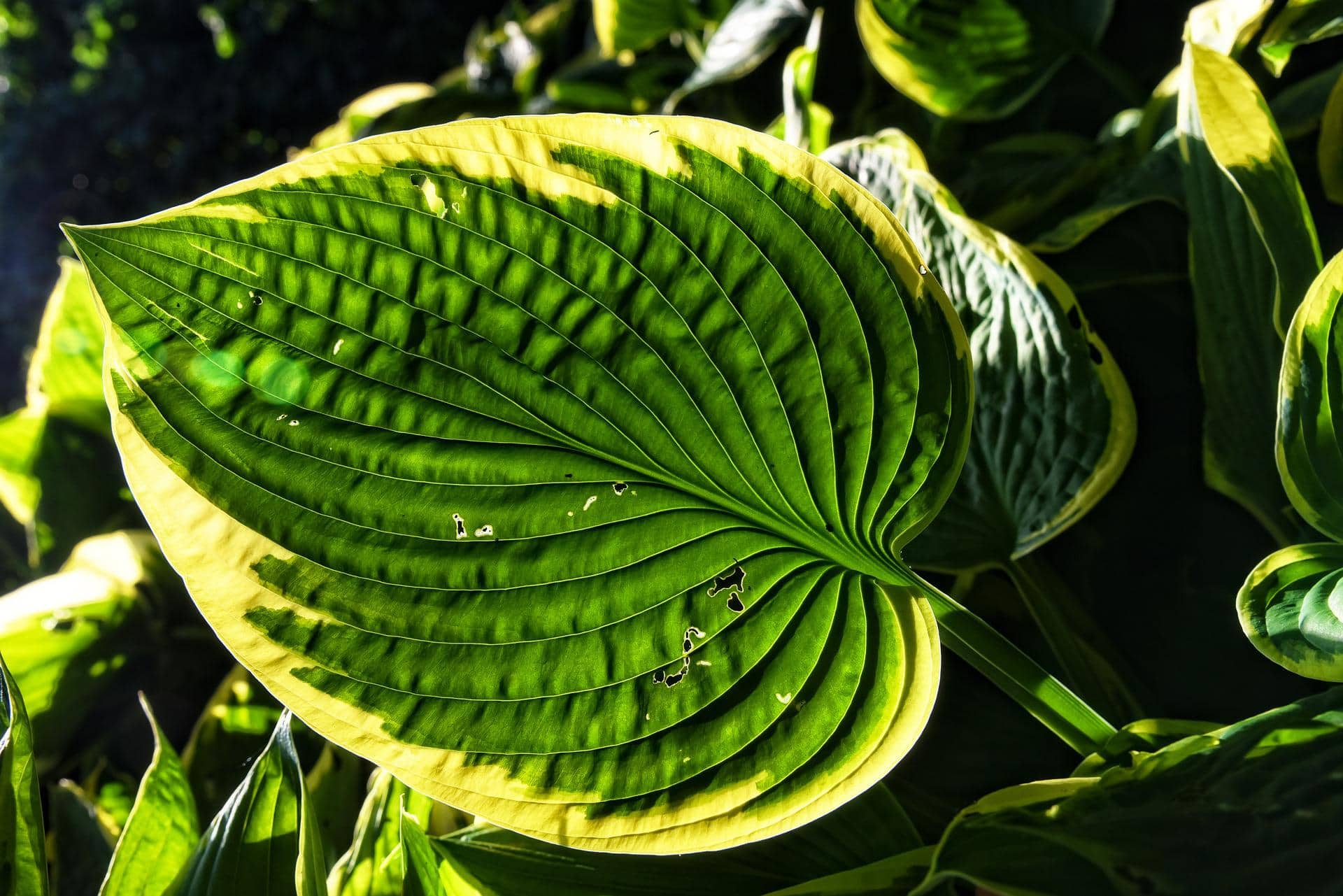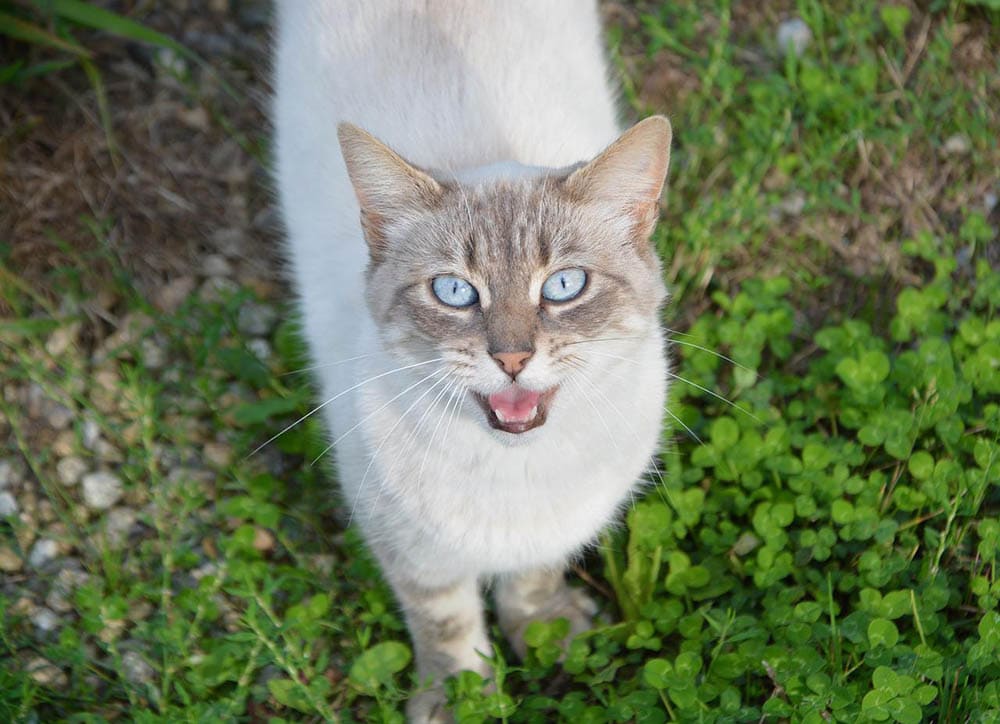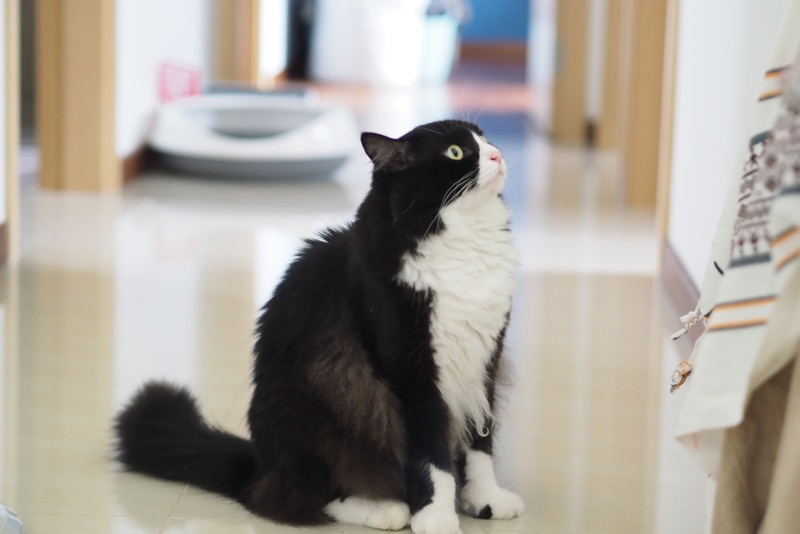Are Hostas Poisonous to Cats? Vet-Reviewed Facts

Updated on

When getting a pet, there are so many things to consider. However, one of the things that we may overlook when getting a pet is the environment.
Often, pet owners don’t recognize or think of the potential hazards in their homes that can potentially poison or kill their pets. For instance, there are many plants in your house or yard that can be harmful to your cat, and hostas are one of them. Hostas are toxic to cats. Keep reading for more!
What are Hostas?
According to the American Society for the Prevention of Cruelty to Animals (ASPCA), hostas (also known as plantain lily, funkia, or the scientific name Hosta plantaginea) are toxic to cats, dogs, and horses. They contain saponins which are bitter tasting and result in usually mild vomiting and diarrhea. Monitor your cat closely if they have eaten some of your hosta plant and contact your veterinarian if you have any concerns.
Hosta are among the most popular and most sold perennials in the world. The numerous varieties, along with their low-maintenance, make them desirable and they can be found in many gardens and landscapes in the U.S. With approximately 45 species and 17 types of hostas, there are plenty to choose from with varying leaves, colors, and sizes.

Types of Hostas
Due to the versatility and abundance of choices in hostas, chances are they can be found in many areas, which increases the risk of your pet ingesting one at some point accidentally. If you have a cat or plan to get one, it may be a good time to familiarize yourself with the different types of hostas and other plants that are harmful to them.
- Hosta whirlwind: Grown mostly in the shade, this plant has green and white, heart-shaped leaves with centers that darken in late summer. From mid to late summer, it grows funnel-shaped upright with lavender blooms.
- Hosta gracillima: A dwarf (mini) plant, with glossy, lance-shaped leaves that grow upright with lavender-blue flowers with purple stripes in late summer and fall.
- Hosta komodo dragon: One of the largest of the Hosta family, it has large bluish-green leaves that bloom in the summer months and gets funnel-shaped, lavender blooms as it grows.
- Hosta crispula: This hosta has leaves that are dark green with cream markings. The leaves are curly and wavy and they make great ground cover in shady gardens. In early summer, it gets a lavender upright bloom as it grows.
- Hosta halcyon: One of the slowest growing hostas, it has bluish green, spear-shaped leaves with late summer pale lavender blooms.
- Hosta guacamole: A fragrant hosta with oval leaves that are yellowish green with gold streaks toward the center. The leaves overlap and grow white flowers in the summer.
- Hosta alligator alley: Used for borders, beds, edging, patios, and containers, it has heart-shaped leaves with yellow-green center. In the summer, the puckered leaves turn yellow with a blue-green edge.
- Hosta august moon: When exposed to the sun, the yellow-green, lopsided leaves turn bright yellow, which lends itself to the name “August Moon”.
- Hosta autumn frost: A plant with blue-green leaves with bright yellow edges that turns to creamy white as the leaves mature and support lavender flowers.
- Hosta blue angel: One of the biggest of the hosta types, it has thick blue-green leaves that have lavender flowers in summer.
- Hosta hyacinthina: When matured, the appearance of the blue-green leaves turns to grayish green with creamy edges. The puckered leaves support the lavender flowers that grow in mid to late summer.
- Hosta American halo: This plant has large blue-green leaves with a white edge and white flowers that bloom in summer.
- Hosta June: This is a hosta with a thick mound of bluish-green, irregularly shaped leaves with a center of green-yellow and lavender flowers that grow in late summer.
- Hosta first mate: This is a small hosta with thin cream-yellow leaves and blue-green star-shaped lavender flowers in the summer months.
- Hosta royal standard: One of the few hostas that have a solid, bright green leaf that will turn yellow-green if put in full sun. The white flowers that grow from the lavender buds are very fragrant, so it is used in living areas, beds, and on patios.
- Hosta Frances Williams: Grown in full or partial shade and known for attracting hummingbirds, this is one of the more popular hostas. It has thick blue-green leaves with wide yellow-green edges and pale lilac flowers.
- Hosta geisha: This plant has glossy, yellowish-green leaves with olive green edges and star-like violet flowers in late summer.
Other plants that are poisonous to your cat include spring bulbs, azalea, rhododendron, chrysanthemum, daffodil, amaryllis, castor bean, and autumn crocus. These should be avoided, if possible.
Keeping Your Cat Safe
The best way to keep your pet from getting poisoned by a hosta or any other plant that may be toxic is to keep your cat indoors. If you want to allow your cat outdoor time, you may need to put safety measures in place, such as putting up a cat fence or getting a catio.
Plants are also a wonderful way to make your home feel warm and cozy. Unfortunately, cats like them too. They like to chew on them and slap the leaves until they fall off. If you love your plants, having a pet shouldn’t prevent you from enjoying them.
One way to have both your cat and your plants is to grow plants that cats don’t like. Felines avoid plants with a strong smell or ones they don’t like to touch. For instance, a cat will be turned off by the smell of rosemary and will avoid touching cactuses or roses due to the thorns.
Another option for enjoying your plants, and your cats too, is to cat-proof your plants. You can put little stones around the plant or put orange and lemon peels in your pots. Spraying the leaves of your plants with lemon juice or orange oil is also a way to deter your cat from eating or playing with them. Be sure not to use any citrus oil extracts or fragrances that are toxic to cats.
If your cat is persistent, you may want to keep your plants in a room that is off-limits to your cat or place some small plastic pots with lemon balm and catnip throughout your home. Hopefully, giving them plants of their own will keep them off yours.
Conclusion
It’s important for us to be able to enjoy our plants while keeping our cats safe. However, knowing the signs of plant poisoning and avoiding poisonous house and garden plants is essential to their well-being. In doing so, you can look forward to the relaxation of gardening and the smell of freshly cut flowers while protecting the health and safety of your furry friend. Hostas are mildly toxic to cats so monitor for signs of gastrointestinal distress.
Featured Image Credit: Pixabay











